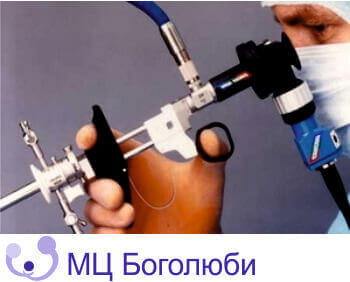Hysteroscopy - (from the Greek hystero - uterus and scopeo – to examine), is a modern endoscopic method for examining the uterine cavity. This method is divided into two types: surgical and diagnostic hysteroscopy. Thanks to the appearance of qualitatively new types of hysteroscopes, hysteroscopy can be performed today not only in a hospital, but also on an outpatient basis.
Conditions for hysteroscopy
One of the prerequisites for hysteroscopy is the extension of the uterine cavity. Depending on the method of stretching, hysteroscopy is divided into liquid and gas.
In modern gynecology, the following media are used for hysteroscopy:
- carbon dioxide;
- high molecular weight environment (32% dextrom);
- low molecular weight medium (saline, glycine, sterile water).
The task of all of the above environments is to create an intrauterine pressure optimal for stretching the uterine cavity, promoting visualization and preventing infection.
Indications for hysteroscopy are:
- infertility;
- uterine fibroids;
- endometriosis;
- menstrual irregularities;
- malformations of the uterus;
- control studies after hormonal therapy and primary miscarriage.
Contraindications for hysteroscopy
Contraindications for the examination are as follows:
- acute inflammatory processes;
- common cervical cancer;
- pregnancy;
- heavy bleeding;
After conducting diagnostic hysteroscopy, there is no need for any further special examination. Antibiotics can be prescribed to women at risk for purulent-septic complications.
Surgical hysteroscopy is usually performed on days 6-9 of the menstrual cycle. After it, for the purpose of prevention, antibiotic therapy is prescribed.
Advantages of hysteroscopy - is a simple minimally invasive and highly informative method, it is easy to tolerate, surgery is performed with visual inspection. Specialists of Bogoliuby MC carry out both diagnostic and surgical hysteroscopy.
















